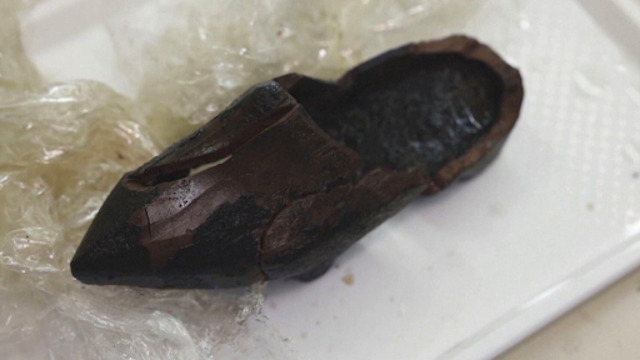
A 500-year-old wooden shoe has been found in Alkmaar, Netherlands. Reuters
In a remarkable discovery, archaeologists in Alkmaar, Netherlands, have uncovered a rare 500-year-old wooden shoe, shedding new light on the widespread use of this iconic footwear. The shoe was found in an unexpected location: a cesspit, which was used for waste disposal in an urban setting. This discovery challenges the common assumption that wooden shoes, or clogs, were primarily worn by farmers.
"This is very special because wooden shoes are often associated with farmers using them for work," said Silke Lange, the archaeologist leading the excavation. "But in this case, the shoe was found in an urban context, suggesting that people were wearing them for daily use, not just for agricultural purposes."
The shoe was discovered last month during construction work for an underground waste container in Alkmaar, located about 30 kilometers north of Amsterdam. The cesspit, which served as a toilet and waste disposal site, was in use between 1450 and 1558. The wooden shoe, measuring European size 36 (or UK size 3.5), is believed to date from the late 15th or early 16th century.
What makes this discovery even more unique is that it is the first wooden shoe ever found in the Netherlands made from birch wood, a rare material for this kind of footwear. It is also one of only 44 wooden shoes ever found during archaeological digs in both the Netherlands and Belgium.
Wooden shoes have long been associated with Dutch culture, especially with rural workers who used them for protection and comfort while working in fields or on farms. However, this find in an urban cesspit provides new insight into the versatility and popularity of clogs during this period. The discovery suggests that wooden shoes were not just functional workwear but also part of everyday life for people living in cities.
The shoe’s location in a cesspit highlights how ancient urban waste disposal systems were used, and how they can sometimes preserve rare items like this. Cesspits, though unpleasant, often served as time capsules, trapping everyday objects that might otherwise have decayed over the centuries. This wooden clog provides a fascinating glimpse into the footwear choices of the past, highlighting the enduring legacy of Dutch craftsmanship.
The find has sparked interest not only among historians and archaeologists but also among shoe enthusiasts and cultural experts who are keen to learn more about the daily lives of people in the 15th and 16th centuries. For the Dutch, this discovery adds a new layer to the rich cultural history surrounding their famous wooden clogs.
As this discovery continues to capture the imagination, it also serves as a reminder of the importance of preserving history through excavation and research. With every dig, new pieces of the past are unearthed, offering deeper insights into how people lived, worked, and interacted with the world around them.















